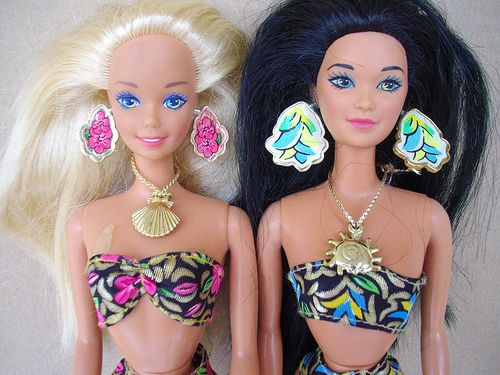Could Barbie Be Telling Your Daughter She Has Fewer Career Choices Than Boys Do?

The problem with Barbie dolls (to name only one) is that parents and academics have yet to figure out what role they’re supposed to play. Are they outlets for fantasy or socialization tools? A new study argues the latter, at least in part — and specifically that girls who play with Barbies may grow up with tainted ideas of the career paths open to them.
Call them dolls or action figures or whatever you like; the debate is the same. Miniature toy versions of popular characters give kids something to play with. But as a society we’ve gotten less comfortable with the idea that realistic human toys let children indulge their fantasies. Princess Barbie is fair game, so long as she isn’t the only Barbie. She must exist alongside Teacher Barbie and Doctor Barbie to let girls know, if Barbie is to be a role model, that they can fill important roles, too.
Girls aren’t getting that impression, the new study argues. Fashion Barbie and hypersexualized Doctor Barbie instead serve to pigeonhole girls into certain professions. As girls see it, having unlimited choice is a luxury enjoyed only by boys, the team found. And a large part of that was due to the toys they were given to play with.
“Perhaps Barbie can ‘Be Anything’ as the advertising for this doll suggests, but girls who play with her may not apply these possibilities to themselves,” explained co-researcher and associate professor at Oregon State University, Aurora Sherman, in a statement.
When Sherman and her colleague, Eileen Zurbriggen of the University of California, Santa Cruz, recruited 37 girls between the ages of 4 and 7, they found overwhelmingly that girls who played with Barbies said girls could fill fewer roles than the girls who played with the starchier and less glamorous Mrs. Potato Head. Though the girls that played with Mrs. Potato Head saw the same pictures of various professions, they were more likely to say boys and girls were equally capable of filling the roles. The Barbie group did not share that opinion.
The researchers acknowledge their study can’t indict Barbie of hurting girls’ career potential as much as it can point to a possible consequence of girls playing with Barbies. “I think it's possible that girls also learn positive messages from fashion dolls,” Sherman told Medical Daily, “but we didn't find that in this study.” Despite the 100-plus incarnations of the Barbie doll over the decades, Sherman points out, the favorite has always been fashion Barbie. She’s quintessential Barbie, decked out in the latest trends and endowed with countless mix-and-match accessories.
“In addition, the majority of careers that Barbie has been sold in have a heavy emphasis on looks over brains or skills,” Sherman said. “As just one example, College Barbie was sold with a dorm room that included a scale, but no books.”
Barbie’s also been in the spotlight for her impossible figure, which, if adapted for a girl of average height, would render her paralyzed. Her ankle bones would be pulverized under the weight of her skeleton and she’d suffer multiple organ failure as a result of her cinched waist. This has led graphic artists to design prototypes of “normal-sized” Barbie, who could serve as a realistic role model for an age group that already struggles to retain a healthy body image.
But then again, is that Barbie’s true purpose? Is she meant to portray realistic measurements. Critics of the anti-Barbie side argue the doll was always intended to let girls play, to let them cast aside their rational sides and enjoy their imaginations. For this lot, playing with a normal-sized Barbie that’s dressed in a sensible top and jeans takes away the entire essence of Barbie. It’s the parents who should be teaching their daughters about the world, they argue; not a plastic toy. And for her part, Sherman may agree.
“In my study, the two versions of Barbie we used, fashion Barbie and Dr. Barbie, did not have a different impact on girls' ideas about careers for themselves compared to careers they saw as possible for boys,” she told Medical Daily. “I think that suggests that costumes related to careers are not enough to expand girls' horizons.”
Source: Sherman A, Zurbriggen E. “Boys Can Be Anything”: Effect of Barbie Play on Girls’ Career Cognitions. Sex Roles. 2014.
Published by Medicaldaily.com



























